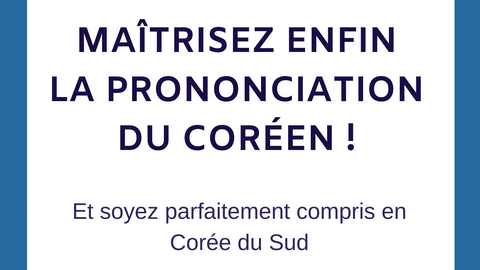Cours de coréen ᚛ Level 1 - My First Steps in Korean (Lessons 1 to 30) ᚛ Leçon 22 - The verb "to have", to exist, there is [있다]
The verb "to have", to exist, there is [있다]
있다 is a somewhat particular and widely used verb in Korean that will be used in the following cases:
- to express the verb "to have" as it is used in English, possession
- in the expression "there is"
- to express the verb "to be", to existence in terms of location, to express being in a place
Possession
있다 can express the verb “to have” or “to possess” in English. In this sense, it is usually used with the subject particle 이 / 가 attached to that which is possessed, in the following way:
[Object]이 있다 / [Object]가 있다
For English speakers, it might seem strange that the object is the subject of the verb “to have”, whereas in English, in the sentence “I have…”, the object possessed is the direct object of the verb “to have”.
In fact, 있다 means "to exist" and not "to have" in the proper sense of the verb. What is possessed is therefore the subject of the verb in the sense that “the object exists”, and not a direct object.
나는 우산이 있어.
→ I have an umbrella.
Literally, this sentence means “As far as I am concerned, an umbrella exists”, which can translate more naturally into English by expressing the possession of this umbrella.
지유는 자전거가 있어요?
→ Does Jiyu have a bicycle?
Likewise, this question literally means "As far as Jiyu is concerned, does a bicycle exist?", which we can translate more naturally into English as the question of whether or not Jiyu possesses a bicycle.
나는 지우개가 있어.
→ I have an eraser.
저는 옷이 조금 있어요.
→ I have some clothes.
저는 친구가 많이 있습니다.
→ I have a lot of friends.
There is / There are
The verb 있다 is also used to express “there is” and “there are”.
This expression presents no difficulty, just use it as before, with the subject particle 이 / 가.
고양이가 있어.
→ There is a cat. (literally: A cat exists.)
문제가 있어요.
→ There is a problem. (literally: A problem exists.)
꽃이 있어요.
→ There are flowers.
호수가 있어.
→ There is a lake.
나무가 있습니다.
→ There is a tree.
The verb “to be” of existence
We have already studied the verb "to be" 이다 and I told you that it couldn’t express the fact of "being" in a place. For this, we will use the verb 있다.
Note: 있다 is often accompanied by the particle 에. This particle is used to indicate a place, and, like all particles, it is placed just after the noun phrase to which it is attached. We will come back to this particle in the following lessons.
저는 집에 있어요.
→ I'm at home. (lit: As far as I am concerned, at home, I exist.)
너는 학교에 있어?
→ You're at school? (lit: As far as you are concerned, at school, do you exist?)
티비는 거실에 있어요.
→ The television is in the living room.
포도가 테이블에 있어.
→ The grape is on the table.
모기는 산에 많이 있습니다.
→ There are a lot of mosquitoes in the mountains.
Exercises
En savoir +
N'est-il pas frustrant d'arriver en Corée du Sud pour se rendre compte qu'aucun Coréen n'arrive à nous comprendre ? En effet, peu importe notre niveau en coréen, la prononciation du coréen est la réelle clef pour pouvoir profiter à 100% d'échanges avec les Coréens natifs.
Cependant, force est de constater que les mécanismes physiques au niveau de la bouche (langue, dents, palais, gorge) ainsi que les mécanismes linguistiques (nasalisation, palatalisation, renforcement, assimilation, expiration... etc) ne sont jamais enseignés dans les livres ou simplement survolés.
Maitrîsez enfin la prononciation du coréen est la formation vidéo indispensable pour toute personne souhaitant communiquer en coréen sans se voir demander de répéter chaque phrase dû à une mauvaise prononciation !
En savoir +

